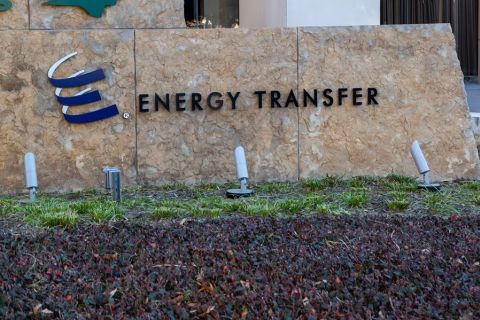
Although Utah's Uinta competes with the Permian's best counties, XCL Resources acknowledges the crude’s paraffin content presents transportation hurdles. (Source: Shutterstock)
It’s no secret Texas’ Permian is an oily cornucopia for E&Ps. But less in the limelight—and proving to be just as competitive—is Utah’s Uinta Basin, said Mark Graeve, XCL Resources’ executive vice president of reservoir and development, at Hart Energy’s SUPER DUG conference in May.
When XCL Resources first began looking to develop across the U.S., the company pivoted away from Texas and the Bakken, finding the wells in the Uinta to be as productive as wells in the Delaware, Graeve told the crowd. As competing E&Ps drill deeper into the Permian and look to expand their inventories, XCL, Ovintiv Inc. and others have staked a claim in the emerging Utah play.
The Uinta compares well with the most prodigious of the Permian’s producing counties in New Mexico and Texas, Graeve said. “If you average every well XCL operates and compare it to the Permian Basin, we’re competitive today with Lea and Loving counties,” he said.
XCL’s drilling and completion costs for its Uinta wells average 20% less than Permian wells at approximately $830/ft, compared to Midland Basin peer costs at around $1,050/ft, Graeve said.
Cheaper drilling costs surprised XCL because of the presence of waxy paraffin in Uinta oil. "If you take a jar of the crude oil and set it on your desk, over time it'll solidify," Graeve said.
However, drilling costs were unaffected because sub-surface temperatures stay at around 230 F, leaving the paraffin in a liquid state.
With competitive drilling costs, the Uinta offers a different cost structure breakdown, Graeve said. XCL found Uinta wells’ LOE is less than Permian peers and the NRI is 80% instead of 75%. Additionally, the company’s 45,000-acre position does not include a continuous development clause or depth severance, allowing XCL to be more thoughtful about development.
The drawbacks relate to transportation. The oil has to be trucked out or moved by rail rather than by pipeline, Graeve said.
“We do experience higher differentials than a Permian company would, but there’s some real benefits of being in Utah,” he said. “You pay a little bit less in taxes—in fact, you have a severance tax holiday for the first six months [on] any new well you drill.”
Paraffin: drawback or perk?
Paraffin present challenges when the Uinta’s crude is transported, Graeve said. Instead of being able to move the oil via pipeline, it has to be trucked. And nearby Salt Lake City refineries are an oversaturated market, so 50,000 bbl/d goes to the Gulf Coast via railroad, he said.
Another 65,000 bbl/d of rail expansion is underway in the basin.
Once the heavier crude oils get to the refineries, though, they offer a more valuable barrel, Graeve said. “Think about the shortest hydrocarbon chain—methane,” he said. “It’s really hard to produce diesel from methane. But if you take a very long hydrocarbon chain—like a paraffin—you can break it into many different products.”
Despite higher differentials that result from trucking and rail, Graeve said the benefits of operating in Utah outweigh them.
“We think [the Uinta] is one of the most economic areas in the Lower 48,” Graeve said. “By being willing to go…off the beaten path, we’ve been able to amass pretty significant undeveloped inventory.”
To date, XCL has drilled 100 horizontal wells in the basin, Graeve said. But it’s not just XCL reaping the benefits.
E&Ps operate 12 rigs in the Uinta, Enverus’ Ryan Hill, vice president of intelligence, told Hart Energy. In the oil prospective area of the play, nine horizontal rigs are running: Ovintiv operates three, XCL and Uinta Wax LLC each run two and Crescent Energy and Scout Energy each operate one. In the basin’s gassy area, Koda Resources operates two directional rigs and one horizontal rig.
“If you look at Ovintiv’s Q4 earning calls, they said that in 2022 the Uinta matched the Permian for the highest operating margin in [Ovintiv’s] portfolio,” Graeve said.
Recommended Reading
Exxon Mobil, Chevron See Profits Fall in 1Q Earnings
2024-04-26 - Chevron and Exxon Mobil are feeling the pinch of weak energy prices, particularly natural gas, and fuels margins that have cooled in the last year.
Marathon Oil Declares 1Q Dividend
2024-04-26 - Marathon Oil’s first quarter 2024 dividend is payable on June 10.
Talos Energy Expands Leadership Team After $1.29B QuarterNorth Deal
2024-04-25 - Talos Energy President and CEO Tim Duncan said the company has expanded its leadership team as the company integrates its QuarterNorth Energy acquisition.
Energy Transfer Ups Quarterly Cash Distribution
2024-04-25 - Energy Transfer will increase its dividend by about 3%.
From Restructuring to Reinvention, Weatherford Upbeat on Upcycle
2024-02-11 - Weatherford CEO Girish Saligram charts course for growth as the company looks to enter the third year of what appears to be a long upcycle.




